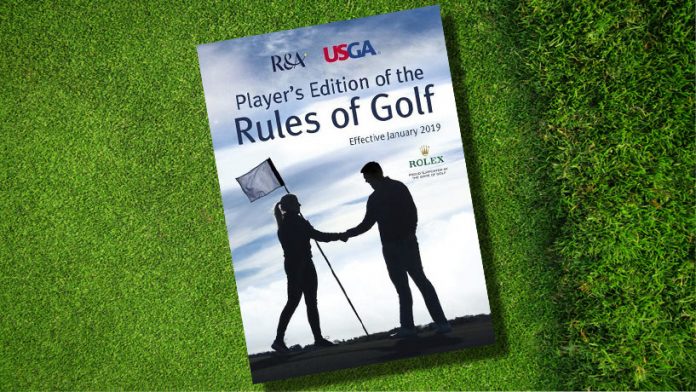
It’s a scene that plays out hundreds if not thousands of times every year at golf courses across Canada.
Two golfers are somewhere in mid-match and one of them gets into a rules conundrum to which neither of them knows the answer.
“After the round we’ll go in and ask the pro. They’ll know the answer,” says one of them.
The match can be just for fun or for a hundred dollars. It can be at a big private club or a small mom and pop operation. The scenario plays out the same.
Most pros have never taken a rules exam and aren’t rules experts but after years of settling these problems they know enough to get by.
The problem is, the rules have changed, literally and figuratively, and the pros, the clubs’ pros, the men and women you see behind the counter selling balls and collecting green fees, are the ones who could suffer.
Let’s face it, if the pro has to admit to a member or a guest that he or she really doesn’t know the new rules their credibility with their members goes down the drain.
And of course, if they give the wrong ruling they could be left with egg on their face.
Work on the rule changes that come into effect Jan. 1, 2019 are significant and actually began in 2012.
They are, in theory, designed to simplify the whole rules process.
“We’re opening up our (rules) seminars in the spring to PGA professionals because we recognize that they are the experts and they are the ones that we want to communicate and educate our golfers,” says Adam Helmer director of rules, competition and amateur status for Golf Canada.
“We’re also definitely encouraging clubs to buy the rules publication first and foremost. There’s the player’s edition, the full rules of golf and the official guide, which has all the interpretations that, foreseeably, the pro is going to need. Let’s face it, the pro is the de facto expert at their club and that’s where the members are going to go.”
In 2012, the United States Golf Association, the Royal & Ancient and Golf Canada began to look at simplifying the rules, but as Helmer points out they quickly got to a point where they decided it was going to be a modernizing of the rules and this is the result.
We asked Helmer what some of the significant changes are. Bear in mind that when he speaks of “the committee”, at many clubs, the pro and/or the general manager are the committee.
Here are his thoughts:
* In marking a golf course, instead of water hazards now there will be ‘penalty areas’. Head professionals, along with their committees, will have to sort out what they want to deem as a penalty area, and it doesn’t have to include something with water. It could be long grass, tree-lined areas, or even a desert. It could have many different shapes or forms.
With penalty areas there are relaxed rules and you will be able to ground your club and you will be able to remove loose impediments. That also applies to loose impediments in bunkers like leaves and twigs.
Because we see green speeds increasing, if a player causes a ball to move on a putting surface there is no penalty. He or she just replaces the ball.
You can now leave the flagstick in on the putting surface if you want to when you are putting.
You can now fix spike marks and other damage on the greens.
When you are taking relief for something, there’s a defined relief area which is either one club length for free relief, or two club lengths for penalty relief.
Whenever your ball goes ‘out of bounds’ you can take relief at that spot in a relief area that goes to the nearest fairway and drop within two club lengths of that nearest fairway for a penalty of two strokes.
Any time you drop a ball it is from knee height and it has to stay within the relief area.
There are now restrictions on caddie alignment of the player.
There is now no penalty if a player’s shot hits himself or his equipment.
There is also no penalty on a double hit. It’s just the strokes that count.
The new rules are also encouraging and promoting pace of play, and state that you should play your shot in less than 40 seconds. We are also encouraging ‘ready golf’.
Helmer is encouraging everyone to visit Golf Canada’s website on rules: golfcanada.ca/rules
And one last tidbit: the men and women we have forever referred to as ‘rules officials’ are now officially to be called ‘referees.’ There has been no word, however, on whether they will have to wear black and white striped shirts.











